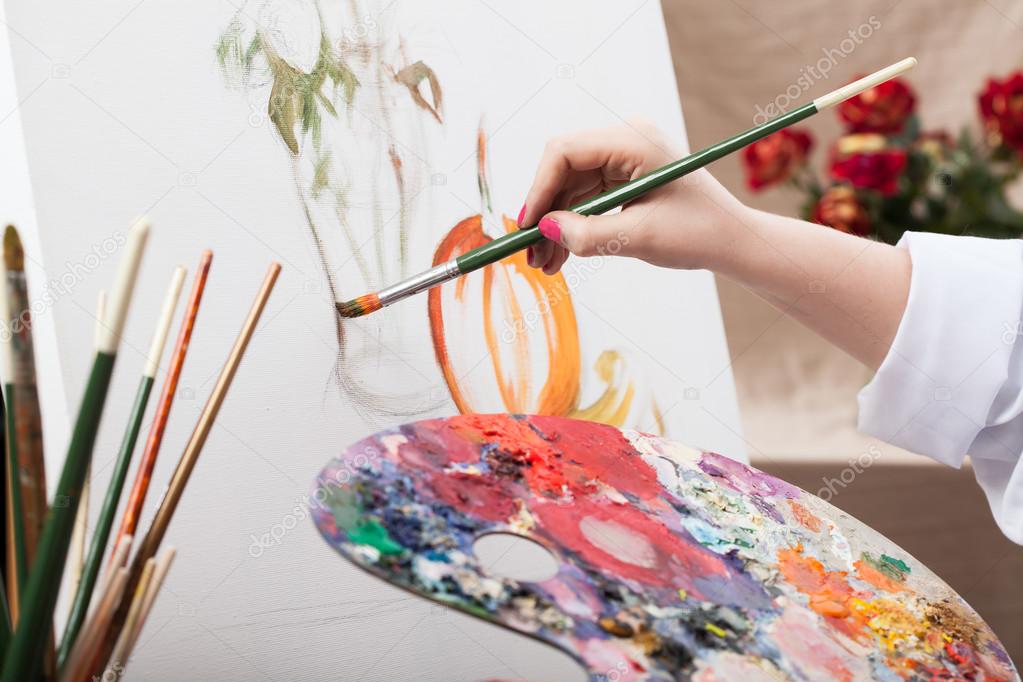In 2025, where AI-generated visuals flood our screens and augmented reality (AR) redefines how we see the world, you might wonder: do traditional painters still matter? The answer is a resounding yes. Painters—those wielding brushes, canvases, or even digital styluses—continue to shape culture in profound ways, blending age-old craft with cutting-edge technology. From sparking social movements to redefining creativity in a digital age, painters are far from obsolete. Here’s how they’re leaving their mark on today’s tech-saturated culture.
Painting as Cultural Commentary
Painters have always been storytellers, and in 2025, their canvases—whether physical or digital—are megaphones for social issues. Street artists like successors to Banksy use murals to tackle climate change, inequality, and political divides, their works shared virally on platforms like X. A single powerful image of a melting polar bear or a divided cityscape can cut through the noise of algorithm-driven feeds, humanizing complex issues. For instance, recent murals in urban hubs like Los Angeles or Berlin, amplified online, have fueled discussions on gentrification and migration, proving painting’s power to provoke thought.
Unlike fleeting social media posts, a painting’s permanence—whether on a wall or a gallery—demands attention. Painters distill cultural anxieties into visuals that linger, like a 2024 piece by a New York artist depicting AI as a faceless figure, which sparked heated X debates about tech’s role in humanity. These works don’t just reflect culture; they steer it, pushing viewers to question the status quo.
Merging Paint with Pixels
Technology hasn’t sidelined painters—it’s expanded their toolkit. Digital painting, using tools like Procreate or Adobe Fresco, lets artists create with infinite layers, undo mistakes, and share instantly. These works, often posted on X or Instagram, reach millions in hours, shaping trends in real time. For example, digital painters creating vibrant, surreal portraits for NFT marketplaces have redefined what “value” means in art, despite the market’s ups and downs.
Moreover, AR and VR are game-changers. Painters now collaborate with tech developers to create immersive experiences. Imagine walking through a virtual gallery where a painter’s brushstrokes come alive in 3D, or scanning a mural with your phone to see it animate via AR. In 2025, artists like those in the ArtTech Collective are blending traditional techniques with these tools, making paintings interactive cultural artifacts. A recent project in Tokyo turned a traditional sumi-e painting into an AR experience, blending ink strokes with animated cherry blossoms, drawing global attention on X.
Emotional Anchors in a Digital Age
In a world overwhelmed by notifications and AI-generated content, paintings offer something tech struggles to replicate: raw human emotion. A single brushstroke can convey grief, hope, or rebellion in ways algorithms can’t fully mimic. Painters in 2025 are cultural therapists, creating works that help us process a chaotic world. Studies shared on X suggest 65% of Gen Z turn to visual art for mental health relief, with painters’ tactile, human-made works standing out against sterile digital outputs.
Traditional painters, using oils or acrylics, remind us of our humanity. Galleries showcasing tactile works, like those at the 2025 Venice Biennale, draw crowds seeking authenticity amid AI’s rise. Meanwhile, digital painters bridge this gap, creating hyper-realistic or fantastical works that resonate with younger, tech-native audiences. Both forms—analog and digital—anchor culture by offering spaces for reflection.
Shaping Trends and Consumer Culture
Painters influence more than galleries—they shape what we wear, watch, and buy. Fashion brands in 2025 collaborate with painters for limited-edition designs, like a recent Adidas drop featuring abstract patterns from a Lagos-based artist, which sold out after trending on X. Painters’ aesthetics also inspire video game environments and film visuals, with studios hiring artists to ensure human-made authenticity in a world wary of AI overreach.
Yet, this commercial influence has a flip side. Some argue painters risk diluting their cultural impact when their work becomes a brand’s marketing tool. X threads often debate whether corporate collabs compromise art’s rebellious spirit, highlighting the tension between influence and integrity.
How Painters Make a Difference in Real Time
In 2025, painters have unprecedented opportunities to drive change in real time, leveraging technology to amplify their impact. By creating murals in public spaces—whether physical or digital—they can spark immediate conversations on platforms like X, where a single post can reach millions within hours. For instance, a painter addressing climate change with a vivid street mural can inspire local protests or global campaigns, as seen with recent artworks in São Paulo that trended online and spurred community clean-up initiatives.
Digital painters can contribute by sharing works directly to social media, using hashtags or live streams to engage audiences instantly. A digital canvas critiquing social injustice, posted during a major news event, can shape public discourse, rallying support or raising funds for causes. Painters are also collaborating with AR developers to create interactive installations that educate in real time—think a mural that, when scanned, overlays data on rising sea levels, urging immediate action.
Moreover, painters can lead community workshops, both in-person and via virtual platforms, teaching others to use art as a tool for expression and activism. These efforts build resilience and unity, turning passive viewers into active participants. By blending their craft with tech’s speed and reach, painters in 2025 aren’t just shaping culture—they’re driving tangible, immediate change, one stroke at a time.


 Facebook
Facebook
 X
X
 Pinterest
Pinterest
 Copy Link
Copy Link
